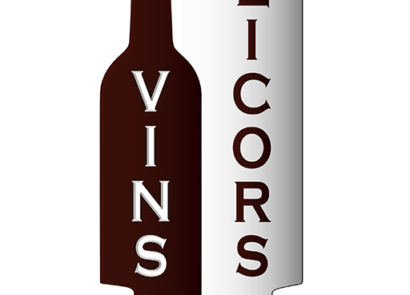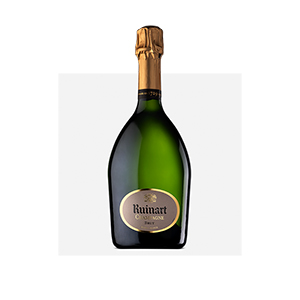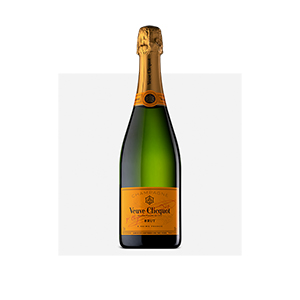- Display 15 Products per page

Desde Champagne fresco y cítrico hasta Grand Cru Champagne sin añada más vendido, y nuestro efervescente Millesime de una sola añada y excellente calidad, los vinos espumosos de seleccion propia representan valor y merecen su atencion.
Champagne is the insignia of luxury and lifestyle
The champagne comes from a small area in northern France, which does not exceed 33,500 hectares and extends over a little less than 150 kilometers. Here, in Champagne, thousands of small winegrowers from the 357 municipalities take care of the vines that give the grapes for the legendary sparkling wine with art. The different conditions of a total of 20 regions or its six main regions give Champagne sparkling wine its own character. The red grape varieties Pinot Noir (Pinot Noir) and Pinot Meunier (Black Riesling) are used by 38% and 34%, respectively, and the white grape variety Chardonnay by 28%. The white grape varieties Arbane, Petit Meslier, as well as Pinot Blanc and Pinot Gris have an occasional participation.
How is champagne produced?
Although red grapes are the majority, you can buy mainly white champagne. To do this, red grapes have to enter the press very quickly after harvest so that the least amount of color on the skins passes into the must, an essential quality characteristic in the production of champagne. From 160 kilograms of grapes, a maximum of 102 liters of must can be obtained. During the first pressing, the Cuvée, only about 80 liters of the valuable juice can be extracted for the best champagne. Champagne sence anee, often called “traditional”, can also contain second and third press base wines.
From Blanc de Blancs to Blanc de Noir
Base wines are assembled in spring for fermentation in the bottle. If a bottle of champagne is produced for which only white grapes have been used, it is called Blanc de Blancs. If only base wines of red grape varieties are put together, it is a Blanc de Noir. If the vintage is not mentioned, they are champagnes in which the base wines come from the current vintage, as well as from older vintages.
Long time with the Champenoise Method
Second fermentation in the bottle, which can only be called in Champagne the méthode champenoise. While a sparkling wine must remain yeast for six months and a Crémant for nine months, 15 months are allotted for a non-vintage Champagne and three whole years for vintage Champagne.
The bottles are then pivoted until the yeast forms a plug in the neck. The neck is frozen before disgorgement. The loss of champagne due to pressure is replaced by expedition liquor – the most guarded secret of any champagne house. These are sweet wines, a sugary solution, or also very light cognac, the Esprit de Cognac, and it determines, among other things, the amount of residual sugar in champagne.
Quality of the champagne
Champagne is always a quality sparkling wine of controlled origin: an AOC. Its alcohol content is usually 12% by volume, but it can also reach 12.5% by volume. In addition, for this sparkling wine a high density of vines is mandatory, which reduces the yield but increases the quality, as well as the manual harvest. A higher proportion of old vintages also benefits quality and can be recognized by the appellation “réserve”. The additions “prestige” or “spéciale” indicate the best champagnes from a champagne house.
The quality classification officially recognized among the best champagnes is based on the price that the grapes of the different municipalities can reach. If this is congruent with the maximum price of a municipality, champagne of them can be called Grand Cru. If the grapes reach between 90 and 99% of the maximum price, you can buy this champagne as Premier Cru.
Suggestions to enjoy champagne to perfection
How is the champagne stored?
Ideally, keep champagne bottles upright. And most importantly, they should be stored in a dark place at a constant temperature of ten to fifteen degrees. For short-term storage, a refrigerator is a suitable place.
What is the shelf life of the champagne?
The champagne has already had a long shelf life before going on the market. At this time it is ripe and will not develop further, save for the rare superior qualities. However, “traditional” champagne can keep for up to three more years if stored optimally. A bottle of excellent Millesime vintage champagne will be an incomparable pleasure even after more than ten years.
How long does open champagne last?
An open bottle of champagne cannot be stored. Champagne is even more finely effervescent than sparkling wine. This character fades after a few hours, even with a cap of champagne. Afterward, sparkling wine remains in the bottle, which is no longer comparable to the champagne that was enjoyed immediately after opening it.
At what temperature is champagne best enjoyed?
The optimum temperature of consumption of the champagne is between seven and nine degrees for flavors that vary from dry to semi-dry. Extra dry champagne can also be poured directly from the refrigerator into the champagne glasses and pink champagne or sweet champagne can be tempered to a good ten degrees.
Food recommendation: What goes well with champagne?
With pleasure the champagne lets you apply the steamed fish in mild sauces on the side. This also applies to oysters, caviar, and seafood that is not too spicy. It can also be served as an aperitif with light patés, Serrano ham, or even Comté cheese with cocktail grapes or tomatoes.
Buy champagne online at Avinae Fine Wine & Spirits
At Avinae Fine Wine & Spirits we are specialists in sparkling wines for all tastes, from Cava and Francha Corta to Champagne. You can choose from a total of 15 champagnes to buy it online or in our store, located in the heart of Palma. See address here: 3, Llums Street 07001. Avinae Fine Wine & Spirits is also unique because of our return policy-if the bottle of champagne bought from Avinae Fine Wine & Spirits is “corked” we will change it in the way you choose. Also, our delivery is for free and 1h in Palma City, and personalized service is a matter of routine.
Champagne
Interesting links
Here are some interesting links for you! Enjoy your stay :)Pages
- Acerca de Avinae
- All Regions
- Avinae Wine & Spirits
- Avinae Wine & Spirits.de
- Avinae Wine Club
- Cancelar suscripción
- Cart
- Checkout
- Condiciones de entrega
- Contact
- Destilados
- Insights
- mallorca wine experience
- My account
- Pla i Llevant D.O
- Politica de Cookies
- Politica de devoluciones/desistimentos
- Politica de Privacidad
- Serra de Tramuntana
- Wine delivery international
- Wine Shop
- Wine tasting service.
- Aviso Legal
- Eventos

 Avinae Fine Wine & Spirits
Avinae Fine Wine & Spirits Avinae Fine Wine & Spirits
Avinae Fine Wine & Spirits  Avinae Fine Wine & Spirits
Avinae Fine Wine & Spirits Avinae Fine Wine & Spirits
Avinae Fine Wine & Spirits Avinae Fine Wine & Spirits
Avinae Fine Wine & Spirits  Avinae Fine Wine & Spirits
Avinae Fine Wine & Spirits 
